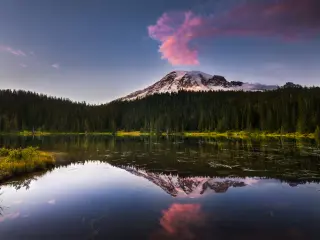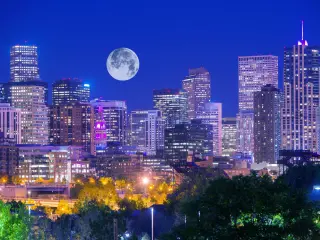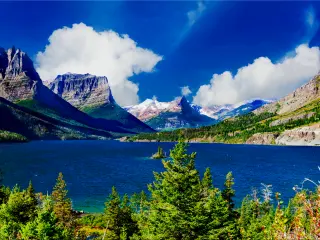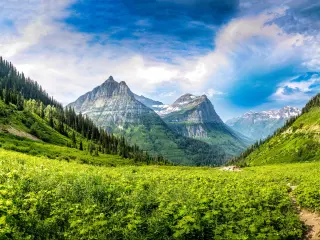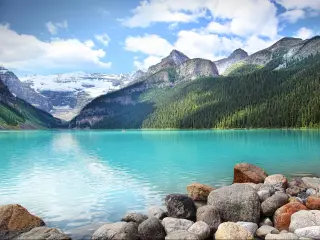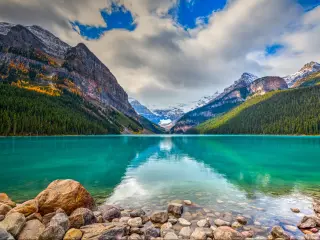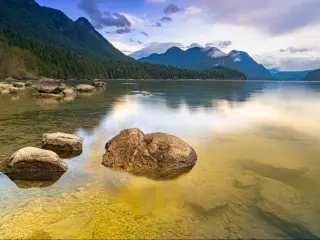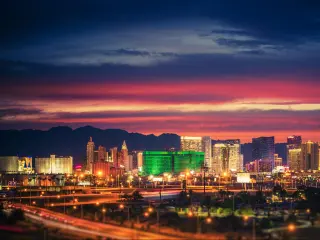Where does Going-to-the-Sun Road Start and End?
The Going-to-the-Sun Road is an enthralling drive through the mountains of northeastern Montana. It takes in some rugged mountain landscapes as you ascend along the route, heading through lush forests and passing stunning glaciers as it meanders its way to the village of Saint Mary, close to the Canadian border.
Going-to-the-Sun Road starts in West Glacier and travels 50 miles through glorious scenery, winding its way through the mountains of Montana to Saint Mary. The route passes the beautiful Lake McDonald, Bird Woman Falls, and Sacred Dancing Cascade.
As well as the amazing scenery and spectacular mountain vistas, there are many excellent walking trails to explore the area on foot and discover more of the National Park. Continue reading to find out more about what this epic adventure has in store for you.
Where is the Going-to-the-Sun Road located and where does it start and end?
The Going-to-the-Sun Road, sometimes shortened to The Sun Road, is a road through Glacier National Park, and It's located in the northeast of the US state of Montana.
The official starting point of the route is in the town of West Glacier. The route takes you eastwards along the shoreline of Lake McDonald before heading towards Logan Creek and the Loop.
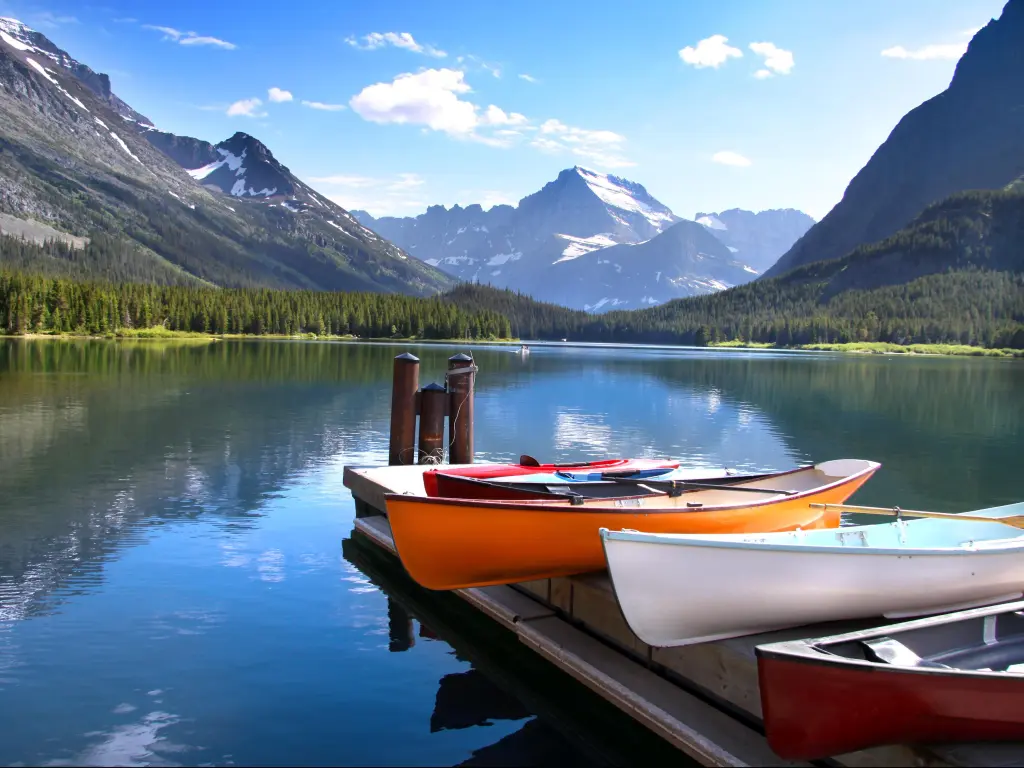
Once you have negotiated the sharpest turn on the route, it continues past the impressive Weeping Wall and winds its way high into the mountains.
The route ascends to Logan Pass, the highest point of the journey, at 6,646 feet, and from here you can witness the most amazing views of the surrounding mountains and glaciers, forged over millions of years.
The route then continues east, heading close to the Canadian border, with the endpoint of Saint Mary located just 19 miles from the region of Alberta, Canada.
If you'd like to learn about whether the Going-to-the-Sun Road is dangerous or not, check out our detailed guide to make your driving easy.
The starting point of the Going-to-the-Sun Road
The most popular starting point for a journey along the Going-to-the-Sun Road is the small town of West Glacier, Montana, which sits on the edge of the Glacier National Park.
The town is located 135 miles northwest of Missoula, the largest city in the area and home to the University of Montana. The city of Kalispell is located only 33 miles to the south of West Glacier and is the largest city in the Flathead region, and as well as the usual amenities, it is also served by an airport.
The town has a range of accommodation available, including log cabins, lodges, and campgrounds, so you may choose to spend the night here relaxing and drive the Going-to-the-Sun Road fully refreshed the next day.
If you are into watersports, the nearby Flathead River is the place to go whitewater rafting. If you prefer a more leisurely approach, take a kayak or canoe and get a different perspective on the surrounding mountains from the waters of Lake McDonald.
You can also take a guided horseback tour along the many trails around West Glacier, or just choose to explore them on foot.
The endpoint of the Going-to-the-Sun Road
Saint Mary, Montana is where the fabulous journey along the Going-to-the-Sun Road ends. Home to the picturesque St. Mary Lake, visitors can take to the water and enjoy kayaking or canoeing in the shadow of the magnificent peaks that tower above it.
Saint Mary also boasts popular hiking trails including the Sun Point Nature Trail, giving fantastic views over the Lake, Red Eagle Lake Trail, St. Mary's Falls, and the Piegan Pass Trail.
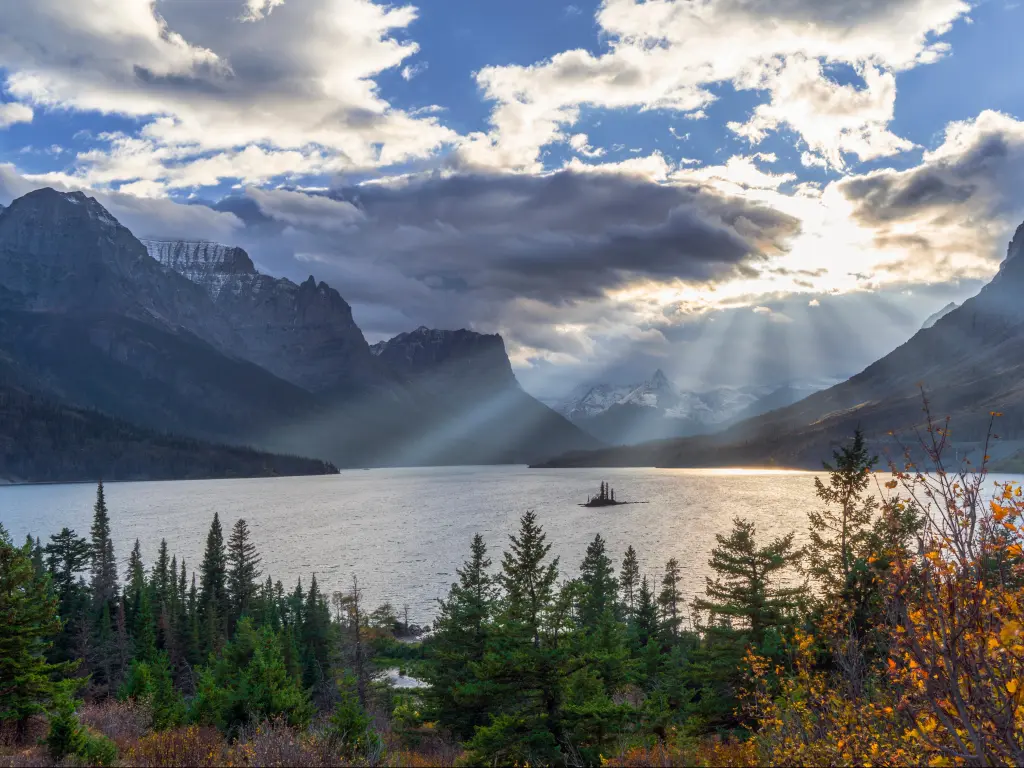
The area is steeped in Native American history, and Saint Mary is located close to the edge of the Blackfeet Indian Reservation. The nearby Museum of the Plains Indian in Browning is an excellent place to learn all about the history and culture of the Blackfeet Tribe.
You can choose to begin the trip here and finish in West Glacier, depending on your starting point, and traveling the route this way will mean you are on the inside lane when tackling the steep hairpins and exposed drop-offs that can be uncomfortable for some drivers.
Did the Going-to-the-Sun Road change over time?
The Going-to-the-Sin Road officially opened in 1933, and it was an incredible engineering feat to build a road through the rugged landscape of Glacier National Park. It took 11 years to complete and was incredibly challenging given the terrain involved.
The road was named after the Going-to-the-Sun Mountain, which was of particular importance to the Blackfeet Native Americans, and their reservation is close to the end of the route at Saint Mary.
The route has developed over time, with significant improvements made to widen the road, add guardrails, implement rockfall barriers as well as improve the road surface and visitor facilities. Vehicle restrictions have also been introduced to improve road safety with a size limit ensuring vehicles can make the journey safely.
The route has also been shortened for safety reasons, and the stretch from West Glacier to Columbia Falls was removed in 1952 and is now part of another road.
Where can I start my Going-to-the-Sun Road trip?
Where you are traveling from will determine which way round you tackle the Going-to-the-Sun Road adventure. The common start and end points are West Glacier and Saint Mary, but you may wish to do the route in reverse if you are approaching it from the north. The table below provides a helpful guide to help you plan your trip.
| Major city | Distance (Time) From West Glacier | Distance (Time) From Saint Mary |
|---|---|---|
| Calgary, Alberta, Canada | 180 miles (3 hours) | 230 miles (5 hours) |
| Spokane, Washington | 270 miles (4 hours 40 minutes) | 320 miles (6 hours 40 minutes) |
| Bozeman, Montana | 310 miles (5 hours 15 minutes) | 360 miles (7 hours 15 minutes) |
| Seattle, Washington | 550 miles (9 hours) | 600 miles/11 hours |
| Portland, Oregon | 620 miles (10 hours) | 670 miles (12 hours) |
| Vancouver, British Columbia, Canada | 670 miles (11 hours 10 minutes) | 720 miles (13 hours 10 minutes) |
How long does it take to drive on the Going-to-the-Sun Road?
The route through Glacier National Park on the Going-to-the-Sun Road is spectacular but short, and the 50 miles can be covered in around 2 hours if you drive it continuously. Whilst this would still be an amazing experience, the route is enhanced by stopping off at all the viewpoints and attractions that make the journey even more worthwhile.
You should stop and enjoy the sheer beauty of the natural environment at each opportunity, which will add around 4 hours to the journey time, and if you want to explore some of the many trails that take you further into the mountains, then allowing a day for the trip is recommended.
Attractions and scenic areas on the Going-to-the-Sun Road
The Going-to-the-Sun Road is an exciting mountain adventure that takes you through some of the most eye-catching mountain scenery in the country. With many natural wonders and attractions along the way, here are some of our favorites:
- Apgar Visitor Center - Find maps of the park and other information on your journey.
- Lake McDonald - You'll drive right next to the lake and there are scenic pullovers. But towards the northern shores of the lake are a lodge and motel where you can stay the night in log cabins with lake views.
- Red Rock Point - At the end of Lake McDonald is the flowing McDonald Creek. A great scenic area to enjoy a picnic.
- The Loop - This monumental hairpin turn in the road offers views of Heavens Peak.
- Triple Arches - As you wind your way along the road you can catch a glimpse of the Triple Arches. The masonry work supports the road and acts as a reminder of its early engineering origins.
- Mountain Goat Study Area - Use the parking spaces available and take a walk up the steps to the overlook and see if you can spot a mountain goat.
- Logan Pass Visitor Center - Logan Pass, is the highest elevation point on the road. There's a signpost stating the elevation at the visitor center where there are also fantastic views of the surrounding mountains.
- Triple Falls - A unique and breathtaking sight where three separate streams of water converge and cascade down a steep cliffside into a serene pool below.
- St Mary Visitor Center - The modern stylish building has interesting exhibits and hiking maps.
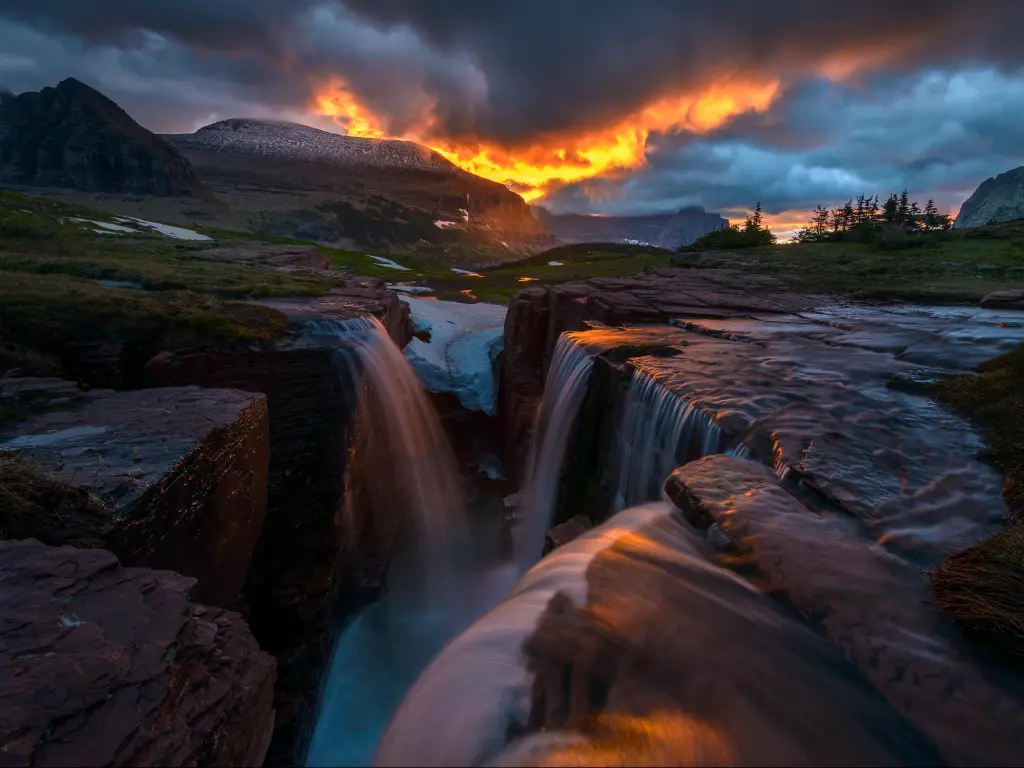
A drive through such magnificent mountain terrain is going to be filled with many awesome views and places to stop and marvel at the beautiful landscape that nature has created. The main stopping points along the route are:
- West Glacier, Montana
- Lake McDonald
- McDonald Falls
- Sacred Dancing Cascade Viewpoint
- Trail of the Cedars
- The Loop
- Bird Woman Falls
- Logan Pass
- Jackson Glacier Overlook
- St Mary Falls Trail
- Wild Goose Island (St Mary Lake)
- St Mary, Montana
The route is blessed with numerous trails and attractions and if you like to get closer to nature and explore the great outdoors on foot, then you will not be disappointed. Here are some of the best hikes along the route:
- John's Lake Trail - This is the trail that'll take you to McDonald Falls. Although viewable from the roadside, the short hike (under 2 miles) is without steep inclines and is worth the stroll.
- Sacred Dancing Cascade Viewpoint - If parking for McDonald Falls is full, continue to the Sacred Dancing Cascade Viewpoint. You can join the Johns Lake Trail here and see both McDonald Fall and the Sacred Dancing Cascade.
- Trail of the Cedars - Hike the Trail of the Cedars on its raised boardwalks to Avalanche Creek. There are also other outdoor activities here at the Avalanche Campgrounds and Avalanche Creek Picnic Area.
- Bird Woman Falls - Bird Woman Falls, and Haystack Creek, are the two tallest in the park. You can see them from the road but use the pullout for spectacular photo opportunities.
- Highline Trail Trailhead - One of the most popular trails in the park, it's jam-packed with scenic views and the famous ledge where you'll have to walk beside a 100-feet drop with a cable rail to hand onto.
- Jackson Glacier Overlook - There's a pullout so you can admire the 7th largest glacier in the park.
- St Mary Falls Trail - Take the St Mary Falls Trail. The 2-mile trail takes you across the turquoise St Mary River to St Mary Falls, a 35-foot waterfall.
- Wild Goose Island (St Mary Lake) - In the middle of St Mary Lake Wild Goose Island. The island gained notoriety by featuring in the opening credits of The Shining. You can take pictures from the overlook.
Things to know that can impact your driving time
The drive along the length of the Going-to-the-Sun Road can be completed in as little as 2 hours, but with so much to see along the way, we recommend spending a whole day enjoying the wonderful scenery and glorious outdoor opportunities.
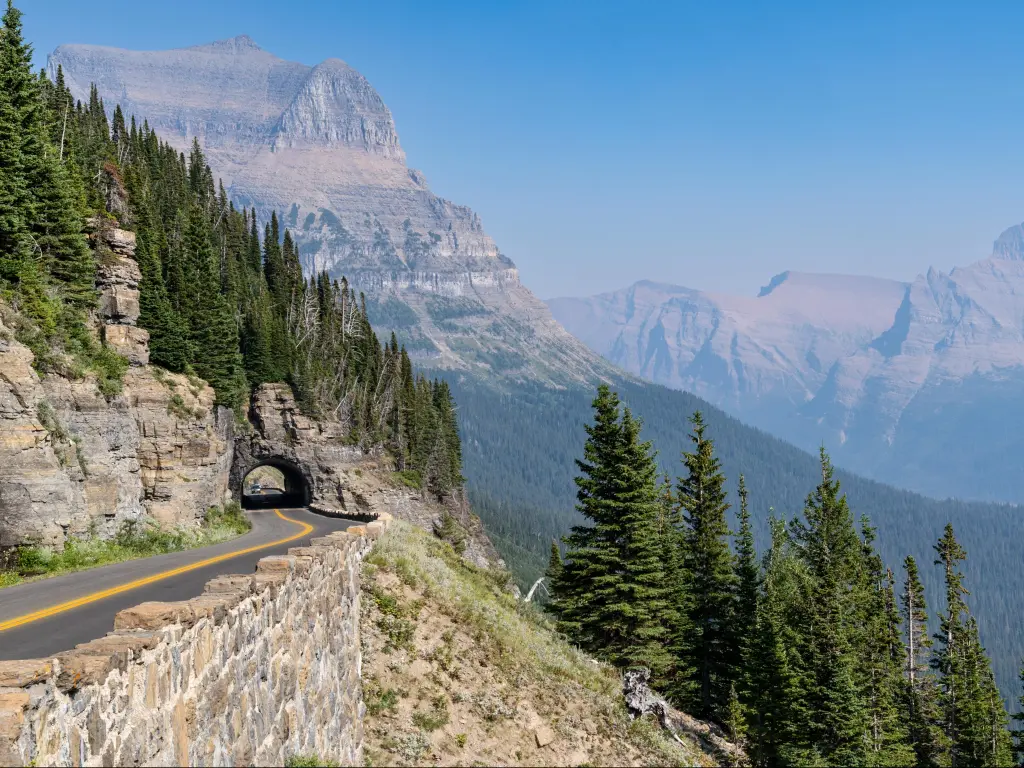
Here are some of our top tips for making the drive along the Going-to-the-Sun Road as enjoyable and stress-free as possible.
- Have two drivers available so you can alternate the driving, stay fresh and relaxed, and have equal time enjoying the magnificent views.
- Choose an economical car, rather than a gas-guzzler (to minimize refueling stops)
- Always check road conditions and closures here.
- Avoid driving on weekends when there's more traffic. Try to drive on the road on weekdays.
- Stock up on snacks and in-car entertainment, there are convenience stores within the park.
- Start early. Often spaces for popular hiking trails are full come 10 AM.
- Fill up on petrol before entering the park. Use the gas station at West Glacier.
- Remember, there is no cell phone coverage within the park, so it's always advisable to plan your route beforehand, and download any maps before visiting.
- From 2023 onwards it is possible to reserve a 3-day vehicle reservation for the route, which will be a requirement between late May and early September. The reservation fee is $2 and can be done online.
Driving the Going-to-the-Sun Road offers a breathtaking and unforgettable experience taking you through some of the most stunning landscapes Glacier National Park has to offer.
The rugged mountains, glacial lakes, and panoramic vistas make it a bucket-list experience, connecting with nature and creating memories that will last a lifetime.

